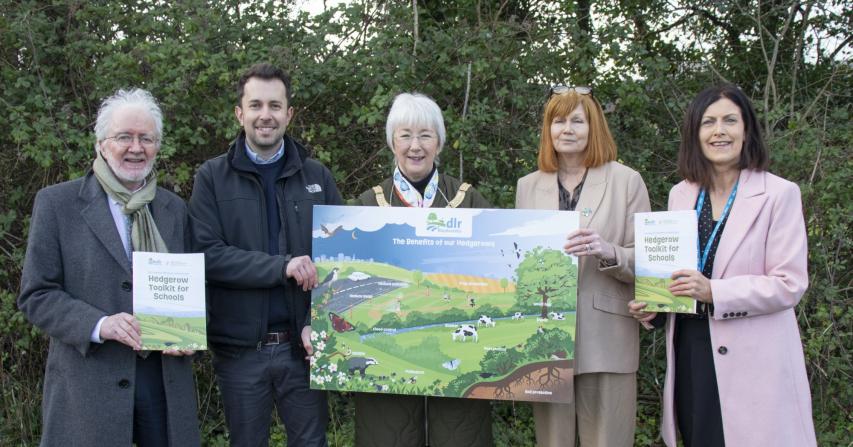DLR carried out a county hedgerow survey in 2008, with a review of the hedgerow surveys in 2020 and a county boundary hedgerow survey completed in 2021.
A total of 1643 hedgerows were digitised in the county. The reports are provided in the Related Documents section on the left side of this webpage.These projects also included the application of ecosystem services scoring (ESS) to our hedgerows. For more information on ecosystem services, click here.
Hedgerows are an important habitat and home to a huge variety of plants and animals. In an urban context important ecosystem services include flood control and reducing soil erosion by intercepting surface water runoff. Percolation into the soil is enhanced by the rooting systems of hedgerow trees and shrubs. Intercepting runoff also enhances water quality by trapping sediment particles, capturing excess nutrients, and reducing inputs of other pollutants. Hedgerows can also improve air and water quality by intercepting airborne pollutants. Hedgerows also provide many cultural services, including landscape character, visual amenity, screening, and historical/cultural heritage. Townland boundary hedgerows are particularly important for historical and cultural heritage. Finally, the importance of hedgerows for carbon sequestration, both above and below-ground, is significant, especially as they often represent the most abundant or only wooded habitat type in our urban landscapes.
Our DLR Hedgerow Toolkit for Schools booklet is a great resource for teachers with lesson plans and activities for children. This booklet and poster was developed by the combined efforts of DLR's Biodiversity Officer, Biodiversity in Schools and Juanita Browne. All documents can be found below.
You can watch our recent Online Biodiversity Talk which discussed our hedgerows in the county and the value of these hedgerows.




